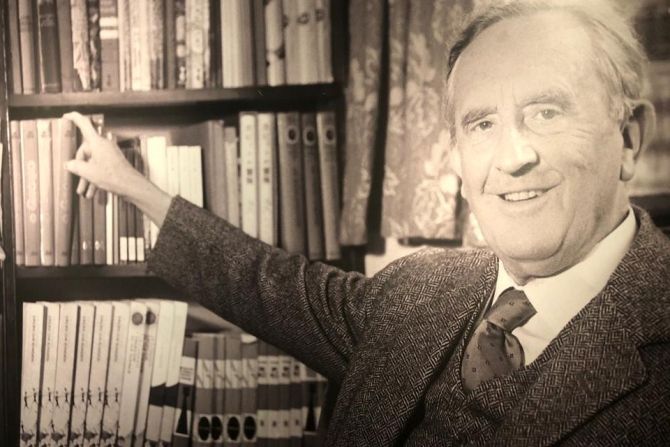
ACI Prensa Staff, Jan 23, 2024 / 17:30 pm (CNA).
One of the most emblematic museums in the city of Rome, the National Gallery of Modern and Contemporary Art, is currently hosting an exhibition on the life of the writer J.R.R. Tolkien, the author of “The Lord of the Rings” who played a decisive role in the conversion to Christianity of his great friend C.S Lewis.
The exhibition, titled “Tolkien: Man, Professor, Author,” which will remain open until Feb. 11, goes through the different stages of the life of the English writer John Ronald Reuel Tolkien, whose literary works are imbued with Catholic elements.
As noted in the exhibition, the creative activity of Tolkien, who wrote that “the only cure for sagging or fainting faith is Communion,” could not have developed without his involvement with the so-called “Inklings,” an informal group of writers and academics with ties to Oxford University who met during the 1930s and 1940s.
This group included some important intellectuals of the time such as Owen Barfield and Charles Williams, but the person with whom Tolkien developed a close friendship was C. S. Lewis, the author of “The Chronicles of Narnia” who held a deep-seated rejection of Christianity during his youth.
Tolkien and Lewis often met in a pub to discuss profound aspects of their professional and artistic concerns. They also often met in Lewis’ study at Magdalen College, where they spent long hours talking about literature and faith.
It was in fact during one of these times together on the grounds of Magdalen College that after a heated argument with his friend and contemporary that Lewis converted to Christianity.
The topic of discussion was the nature and function of the stories for which they both felt great passion. On the one hand, Lewis argued that myths “were nothing more than beautiful lies,” while Tolkien asserted that they were “a form, imperfect but noble and beautiful, with which men explain a universal truth.”
These were central questions for Tolkien, the basis of his literary work and of his conviction that human creativity was a great gift from God, in which his same creative power is reflected and propagated throughout history.
During his youth, the author of “The Chronicles of Narnia” considered himself intellectually atheist, and it was in 1929 that he recognized the existence of God.
Two years later, thanks to the influence of his contemporary, he converted to Christianity, becoming Anglican, not Catholic, which his great friend Tolkien would have preferred.
This story was first published by ACI Prensa, CNA’s Spanish-language news partner. It has been translated and adapted by CNA.
If you value the news and views Catholic World Report provides, please consider donating to support our efforts. Your contribution will help us continue to make CWR available to all readers worldwide for free, without a subscription. Thank you for your generosity!
Click here for more information on donating to CWR. Click here to sign up for our newsletter.





Leave a Reply